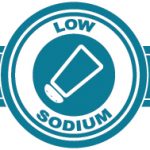
 Making Nutrient Content Claims with Genesis
Making Nutrient Content Claims with Genesis
Nutrient content claims describe the amount of a nutrient there is in one serving of a food, such as cholesterol, fiber, or calories. The claims can be used alone (for example “low fat” or “good source of calcium”) or in reference to another product (such as “reduced calories” or “lower in saturated fat”). Genesis R&D automatically determines which claims are allowable for the nutrients in your Recipe.
Read More.
FDA Has Reopened the Comment Period
Due to the technical errors on the regulations.gov website, the FDA reopened the comment period for its Supplemental Proposed Rule for Updating the Nutrition Facts Label for a four-day period.
Learn more.
FAQs
Q: How can I get my suppliers data into Genesis R&D?
A: There are three ways you can add supplier data:
- Oldest method, and still most common: obtain the specification sheet(s) and manually enter all of the data into your program.
- Use the separate ESHA Port import/export utility to import nutrition data and ingredient properties into your Genesis database from delimited text file(s). This can be done on an individual ingredient basis, or in bulk if you have multiple ingredients from a supplier.
- Many ingredient and food suppliers also use Genesis R&D for their formulation and analysis needs. If they do, there is a recent function added to allow users to export their Recipe as an Ingredient. This allows the supplier to formulate in their Genesis program, while protecting their proprietary information, and still making the nutrition & ingredient properties available for you to import directly into your Genesis without the need for manual entry.
Join the Discussion!
 Join us on LinkedIn and post your labeling and regulatory compliance questions. ESHA’s Nutrition Labeling & Analysis Software LinkedIn Community is open to anyone who shares an interest in food and supplement nutrition, product labeling, and regulatory compliance.
Join us on LinkedIn and post your labeling and regulatory compliance questions. ESHA’s Nutrition Labeling & Analysis Software LinkedIn Community is open to anyone who shares an interest in food and supplement nutrition, product labeling, and regulatory compliance.
